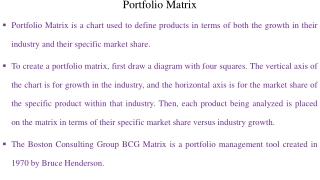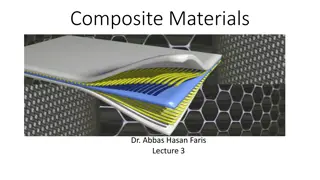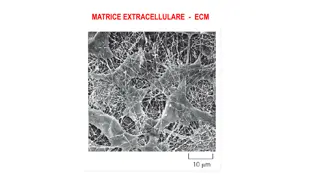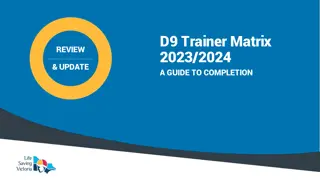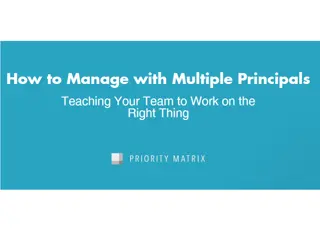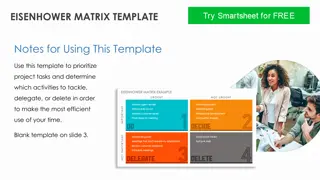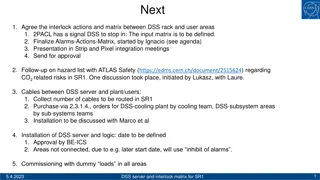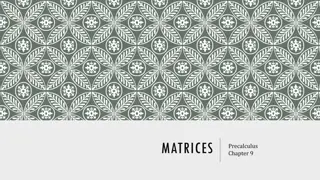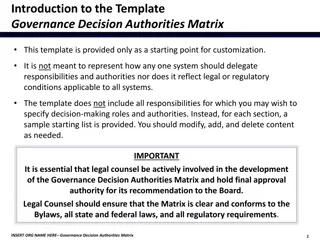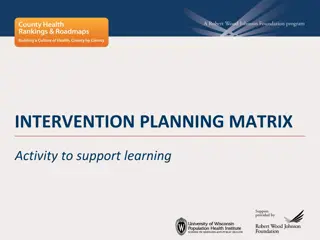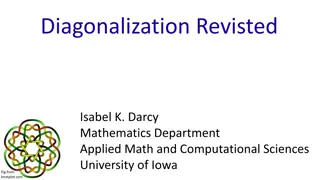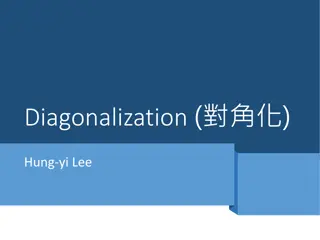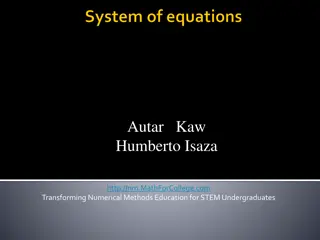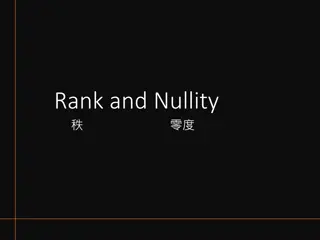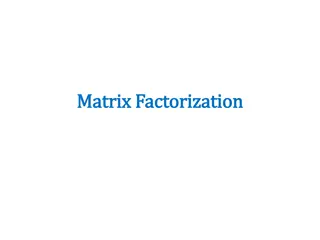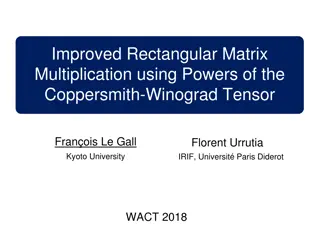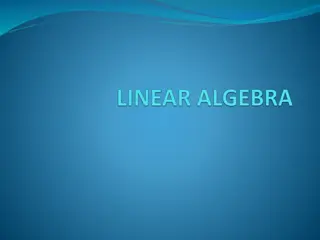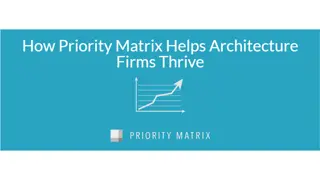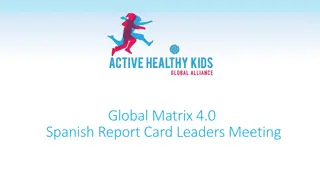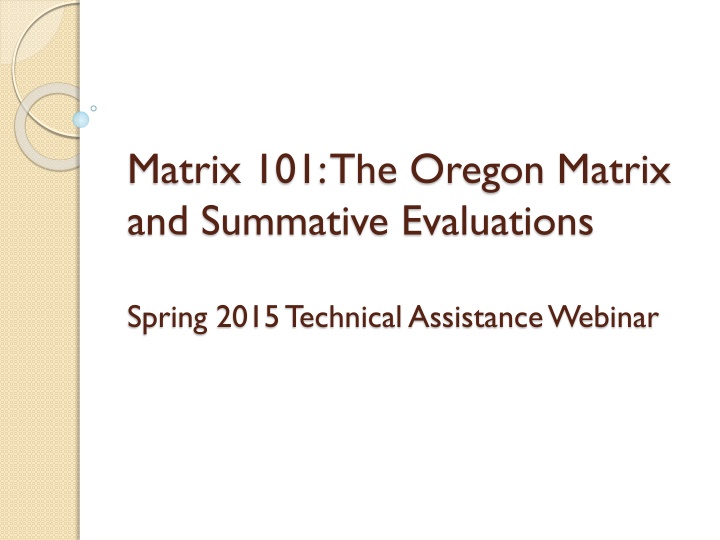
Oregon Matrix and Summative Evaluations Process
Explore the Oregon Matrix's role in the professional growth cycle, learn to interpret the Matrix, and understand customization options. Discover how summative scores are calculated based on multiple measures, including Professional Practice, Student Learning and Growth, and Professional Responsibilities.
Download Presentation

Please find below an Image/Link to download the presentation.
The content on the website is provided AS IS for your information and personal use only. It may not be sold, licensed, or shared on other websites without obtaining consent from the author. If you encounter any issues during the download, it is possible that the publisher has removed the file from their server.
You are allowed to download the files provided on this website for personal or commercial use, subject to the condition that they are used lawfully. All files are the property of their respective owners.
The content on the website is provided AS IS for your information and personal use only. It may not be sold, licensed, or shared on other websites without obtaining consent from the author.
E N D
Presentation Transcript
Matrix 101: The Oregon Matrix and Summative Evaluations Spring 2015 Technical Assistance Webinar
Outcomes Review the role of the Oregon Matrix in the professional growth cycle Understand how to read the Oregon Matrix Identify where the Matrix can be customized Demonstrate calculation of a summative score
Summative Evaluations Based on Multiple Measures Professional Practice (PP) Oregon teacher evaluations must include measures from three categories of evidence: Aligned to the standards of professional practice Student Learning and Growth (SLG) Professional Responsibilities (PR)
Facilitative or Collegial * SLG Inquiry Collegial *SLG Inquiry Facilitative 4 Facilitative 4 LEVEL 4 3 3 or 4 Collegial 3 Consulting 2 Directed 1 Collegial or Consulting *SLG Inquiry 2 or 3 Consulting 2 Collegial 3 Consulting 2 Consulting or Directed * PP/PR Inquiry 1 or 2 Collegial 3 Collegial or Consulting * PP/PR Inquiry 2 or 3 Consulting * PP/PR Inquiry 2 LEVEL 4 Y-Axis: PP / PR LEVEL 3 LEVEL 2 Directed 1 LEVEL 1 *Inquiry Process LEVEL 1 LEVEL 2 LEVEL 3 X-Axis: SLG
Inquiry Process Takes place when the Y- and X-axes do not tell the same story Additional evidence gathered prior to a determination of plan and/or summative performance level Inquiry happens collaboratively Educator can also provide additional evidence
Professional Growth Plans Intersection of the Y-and X-axes determine overall performance level and corresponding professional growth plan Facilitative Collegial Consulting Directed Who takes the lead between educator and evaluator in developing professional growth goals Part of the evaluation cycle and aligned professional learning
Y-Axis Example: Professional Practice & Responsibilities Example of Rubric Component II. Classroom Environment 2a. Creating an Environment of Respect and Rapport I. Planning and Preparation 1a. Knowledge of Content and Pedagogy IV. Professional Responsibilities 4a. Reflecting on Teaching III. Instruction 3a. Communicating with Students 1b. Demonstrating Knowledge of Students 3b. Questioning and Discussion Techniques 4b. Maintaining Accurate Records 2b. Establish a Culture for Learning 1c. Setting Instructional Outcomes 3c. Engaging Students in Learning 4c. Communicating with Families 2c. Managing Classroom Procedures 1d.Demonstrating Knowledge of Resources 3d. Using Assessment in Instruction 4d. Participating in a Professional Community 2d. Managing Student Behavior 3e. Demonstrating Flexibility and Responsiveness 1e.Designing Coherent Instruction 4e. Growing and Developing Professionally 2e. Organizing Physical Space 1f.Designing Student Assessments 4f. Showing Professionalism
Y-Axis = PP/PR Rating Add up all component scores for total points possible; Divide by number of components in your rubric; Get a rating between 1 and 4; Use Y-Axis threshold to determine PP/PR level: 3.6 - 4.0 = 4 2.81-3.59 =3 1.99 2.8 = 2 * < 1.99 = 1 EXAMPLE District rubric with 20 components Component ratings: 17 components were rated 3; and 3 were rated 2 = 57 points possible 57/20=2.85 2.85 = Level 3 PP/PR Rating *PP/PR Scoring Rule: If the educator scores two 1 s in any PP/PR component and his/her average score falls between 1.99- 2.499, the educator s performance level cannot be rated above a 1.
X-Axis = SLG Rating SLG performance level based on two goals Two-year cycle select two of four goals Score SLG goals Get a rating between 1 and 4; Use X-Axis thresholds to determine SLG level: 4 = both goals 4s 3 = both goals 3s; one goal 3 & one goal 4; one goal 2 & one 4 2 = both goals 2s; one goal 2 & one 3; one goal 1 & one 3; one goal 4 & one 1 1= both goals 1s; one goal 1 & one 2 EXAMPLE One SLG was rated 2 One SLG was rated 3 X-Axis Rating = Level 2 SLG Rating
X Axis - Scoring SLGs Category 2 goals scored using state SLG Scoring Rubric ODE is developing guidance on using Student Growth Percentiles (SGPs) for measuring Category 1 goals www.ode.state.or.us/search/page/?id=3475
EXAMPLE: Y-axis = 3 & X-axis = 2 Facilitative or Collegial * SLG Inquiry Collegial *SLG Inquiry Facilitative 4 Facilitative 4 LEVEL 4 3 3 or 4 Collegial 3 Consulting 2 Directed 1 Collegial or Consulting *SLG Inquiry 2 or 3 Consulting 2 Collegial 3 Consulting 2 Consulting or Directed * PP/PR Inquiry 1 or 2 Collegial 3 Collegial or Consulting * PP/PR Inquiry 2 or 3 Consulting * PP/PR Inquiry 2 LEVEL 4 Y-Axis: PP / PR LEVEL 3 LEVEL 2 Directed 1 LEVEL 1 *Inquiry Process LEVEL 1 LEVEL 2 LEVEL 3 X-Axis: SLG
What is required All districts must use the Oregon Matrix to calculate summative scores beginning this year (2014-15) Includes established X and Y thresholds All summative scores for teachers and building principals must be reported to ODE Summative information must be used by districts to inform professional growth plans
What can be customized The performance level labels The Professional Growth Plan s (PGP) names* Additional details on what each PGP looks like* What SLG focus PGP looks like Additional inquiry process ideas Other systemic differentiated supports, such as: Observations Frequency of check-in s/meetings with evaluators Self-reflection practices *Districts must keep the intent of the plans as defined in the Oregon Matrix guidance
Resources Toolkit www.ode.state.or.us/search/page/?id=3759 Oregon Framework Oregon Matrix guidance Resources from Districts www.ode.state.or.us/search/page/?id=3853 Professional Growth Cycle conference materials Additional technical assistance from ODE
Contacts Educator Effectiveness Team: Tanya Frisendahl tanya.frisendahl@state.or.us Sarah Martin sarah.martin@state.or.us Sarah Phillips sarah.phillips@state.or.us Brian Putnam brian.putnam@state.or.us

